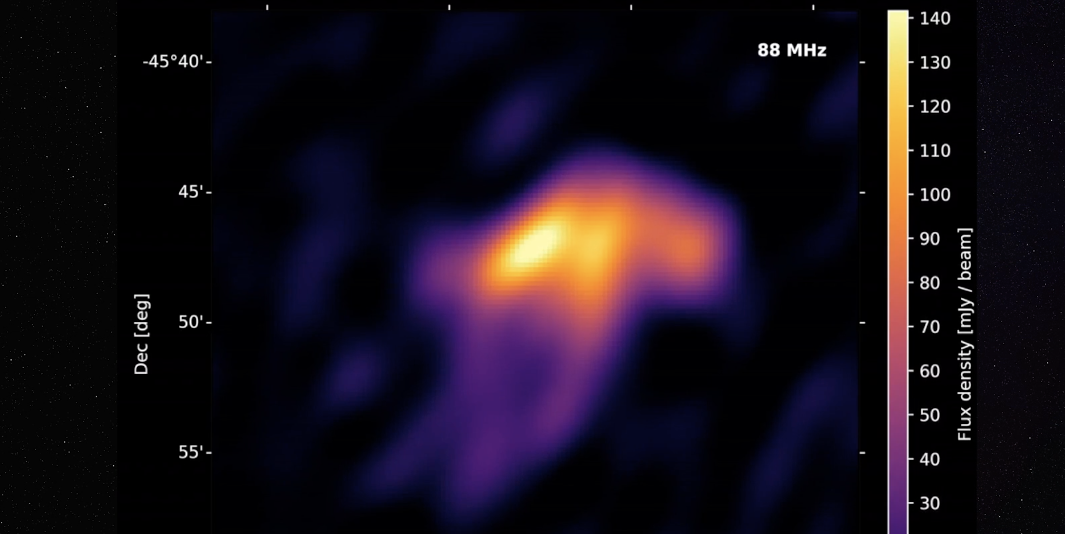
finance.yahoo.com
No One Knows What to Make of This Mysterious Space Jellyfish
Astronomers have never really seen anything like it before.
Science & Tech
Scientists from the Curtin University node of the International Centre for Radio Astronomy Research say regular radio phoenixes are common enough, but this gigantic polyphoenix, with much larger mechanisms at play, is brand new to us. In fact, it’s so huge and strange that lead researcher Torrance Hodgson, the Ph.D. student who discovered it, originally thought it was just a large flub in his data.
What is it really, though? Hodgson and his colleagues speculate that radio phoenix phenomena are the result of aging active galactic nuclei, which are special supermassive black holes that form at the center of many galaxies:
“While the ‘USS Jellyfish’ defies easy classification, we here propose that the phenomenon is caused by the reacceleration and compression of multiple aged electron populations from historic active galactic nucleus (AGN).”
Hence the name phoenix, implying a rebirth or rebound from the brink.
In this case, the scientists say, there are no active galactic nuclei anywhere nearby, but the space jellyfish is likely the remnant of one—the scientists believe the jellyfish to be 2 billion years old. It seems that a cloud, like a puff of smoke remaining after a fire, became reactivated by a gentle mixing in of galactic particles that lit the area back up into the huge tentacled shape we see today.
Many objects in space throw off radio waves, and scientists working at huge telescopes like Murchison Widefield Array (MWA) try to identify where different wave signatures are coming from. That’s where Hodgson first spotted what he thought was a data error in 2017.
VICE reports the gigantic phenomenon lives in a very specific, very low frequency of radio bandwidth that rendered it almost invisible unless scientists knew where to look. This is where the name “ultra steep spectrum” comes from, because the visibility falls off so dramatically after those very low bandwidths.
The space jellyfish is much, much “steeper,” the scientists say, than anything else they’ve ever found. “To be so steep, the source either has to be exceptionally old, except then it should have faded from simply expanding into space; or triggered by a shock that is exceptionally weak, except then it shouldn't be so bright!” Hodgson told VICE.
The scientists say they believed they’d find more objects that are similar to the USS Jellyfish after figuring out what kind of radio signature to look for, but the more they look, the more rare the space jellyfish turns out to be.
How can this astonishing object also be so singular in the observed universe so far? That’s still a very big mystery.
























































